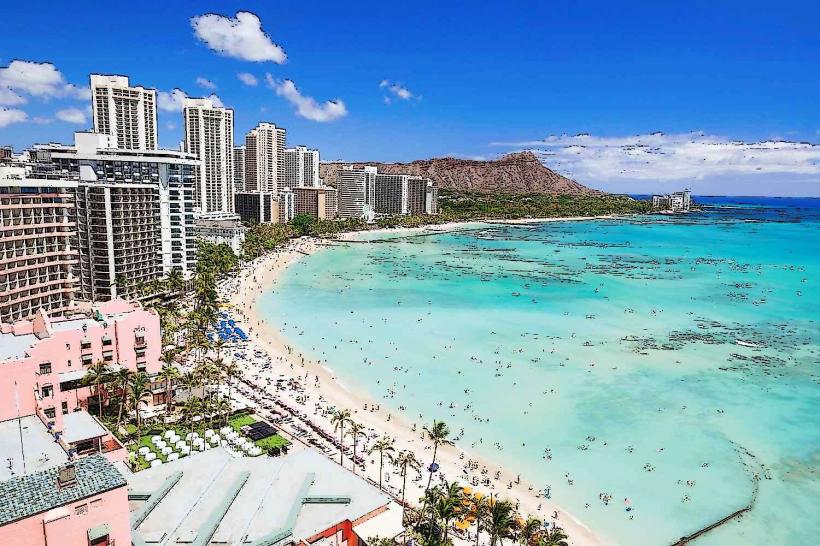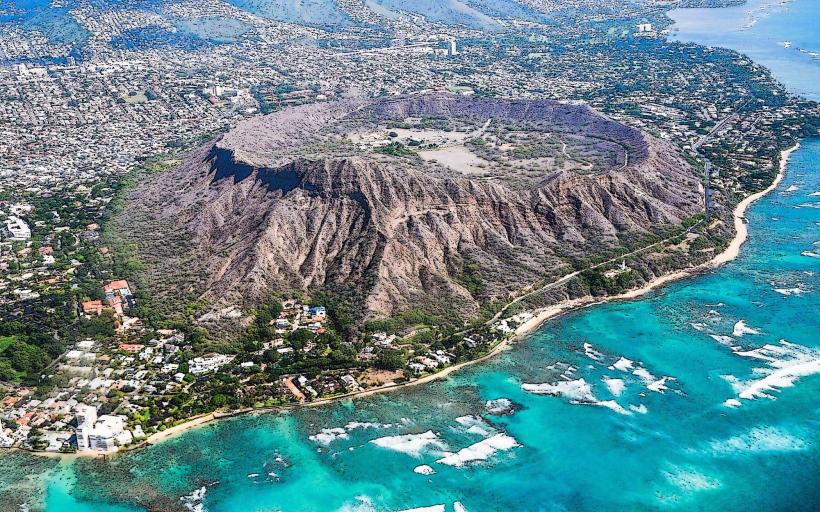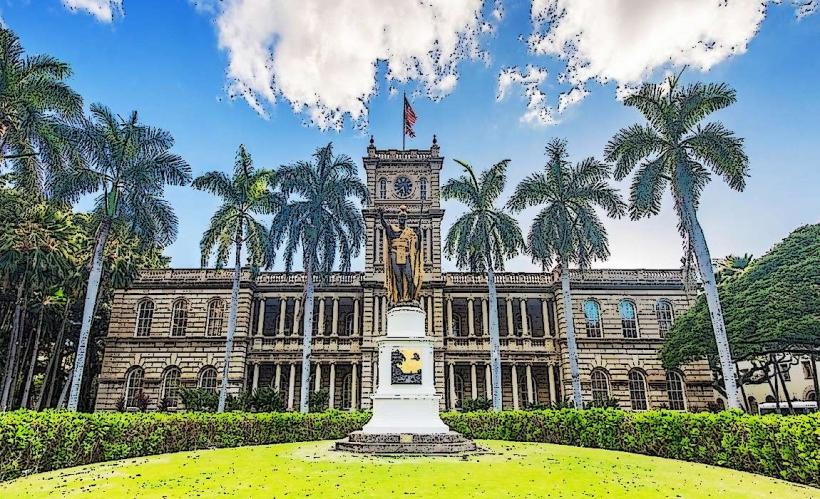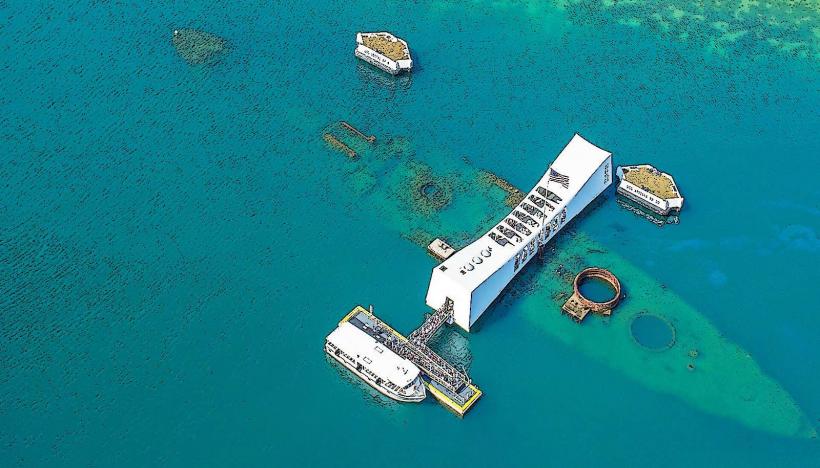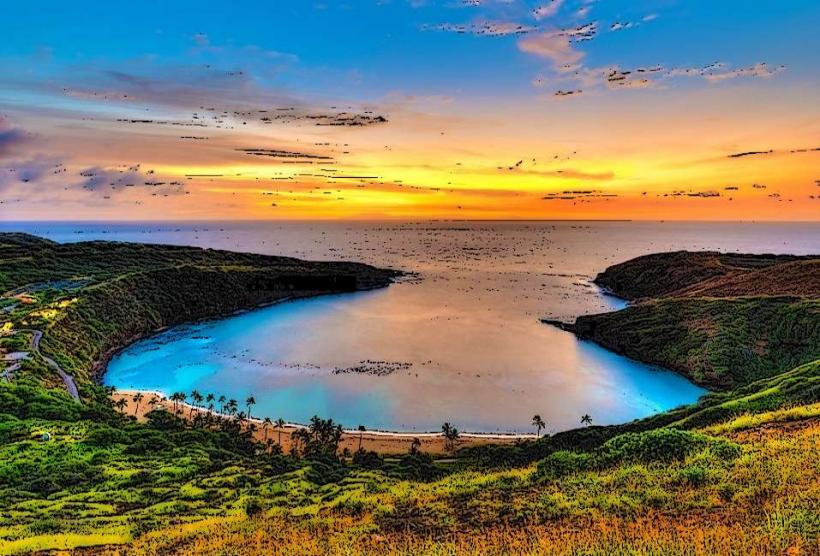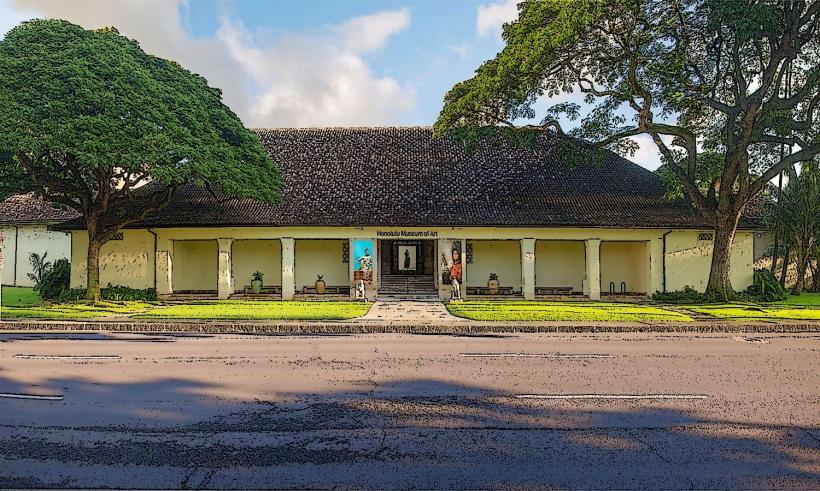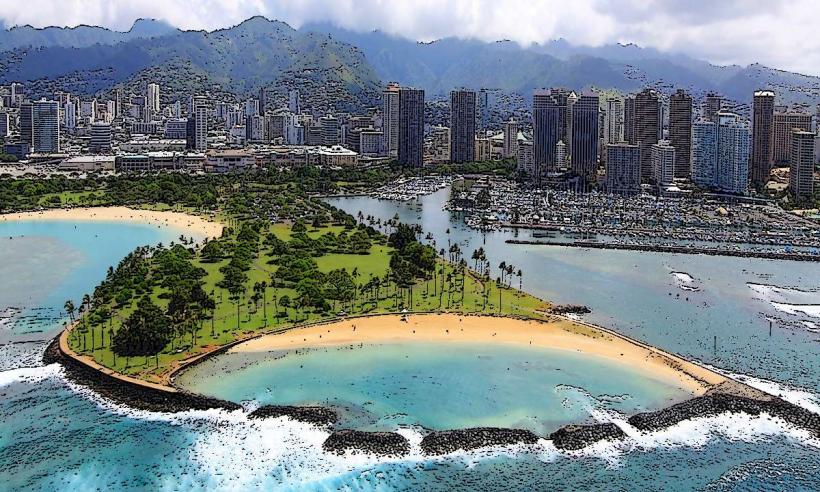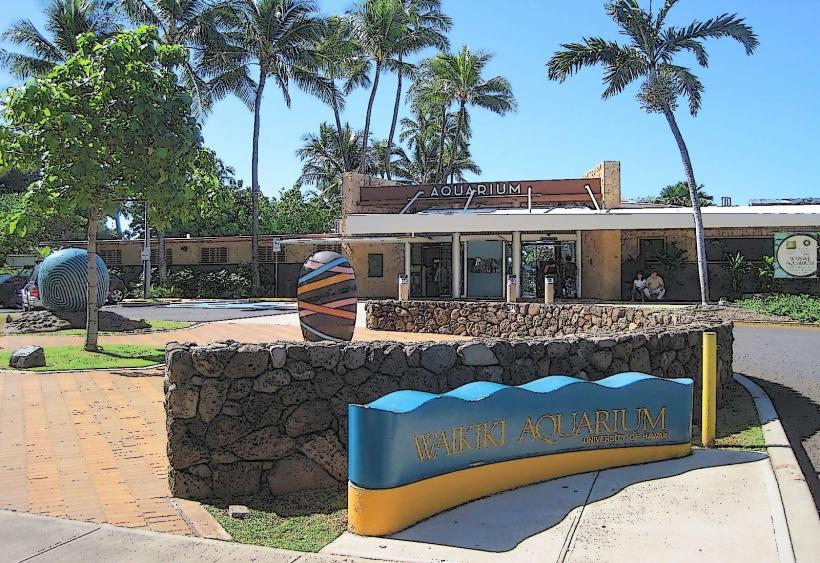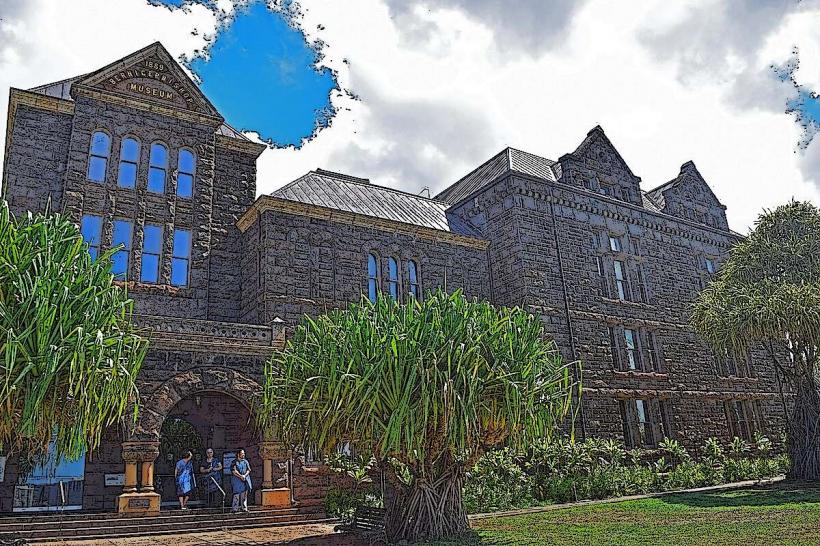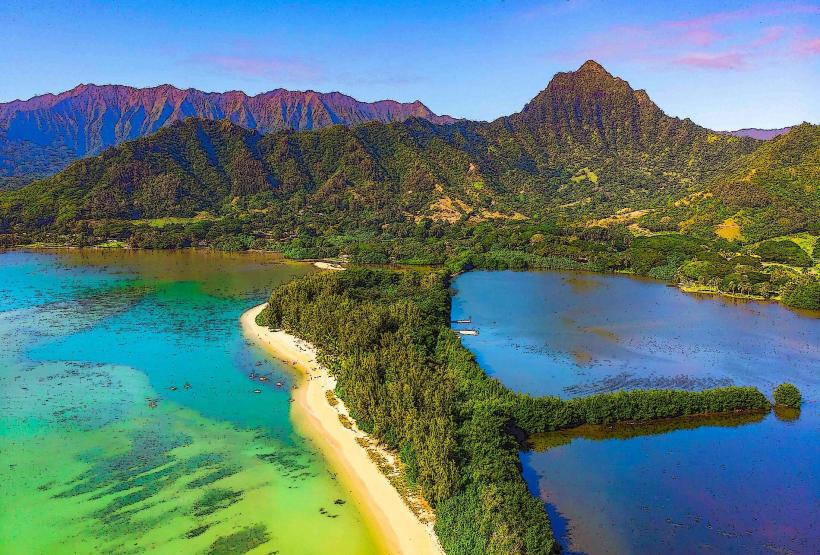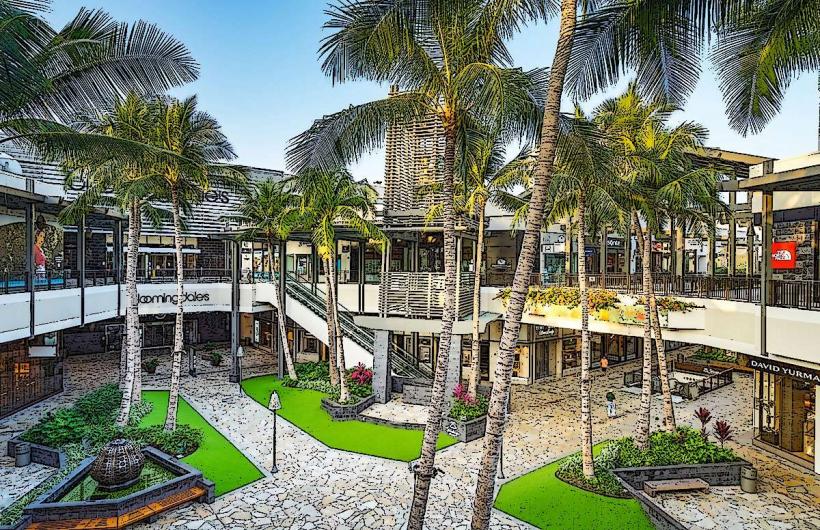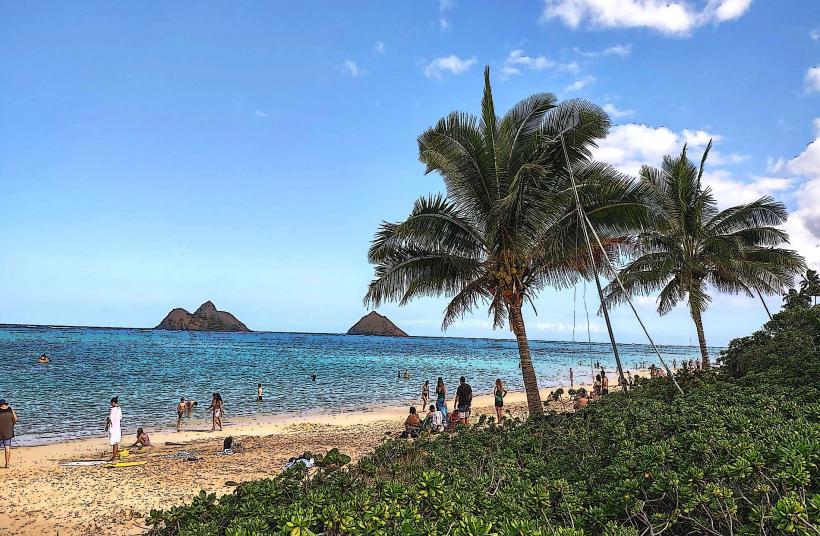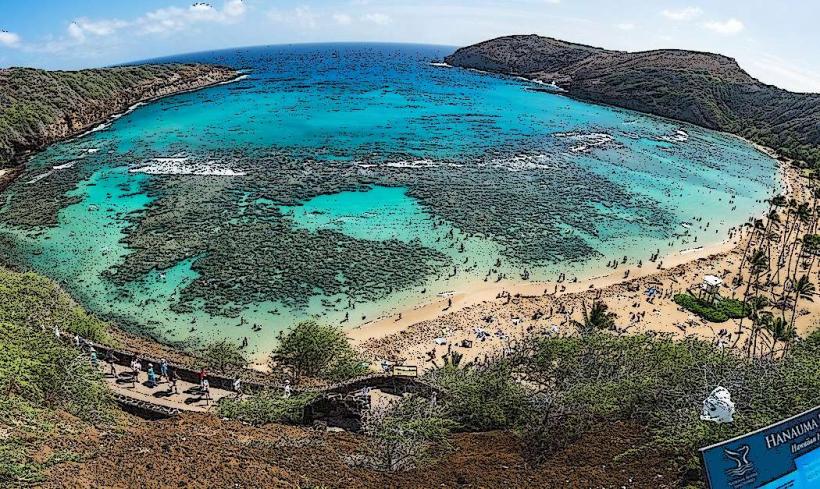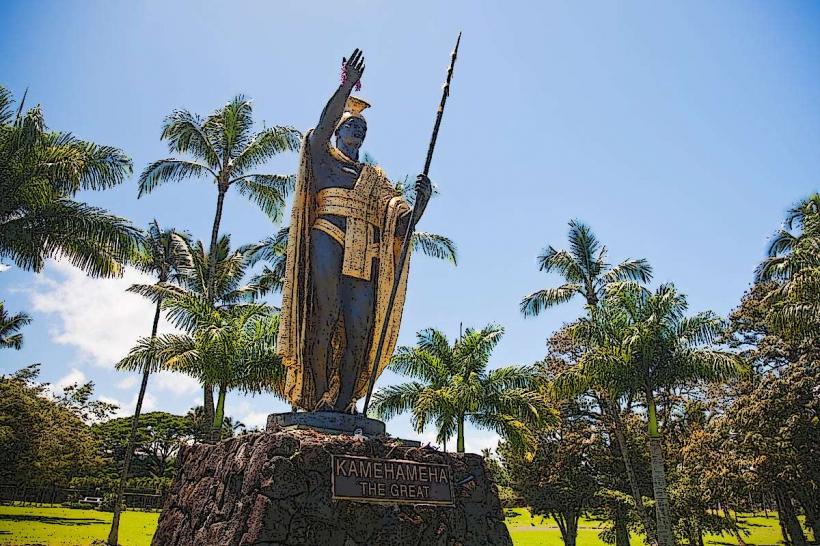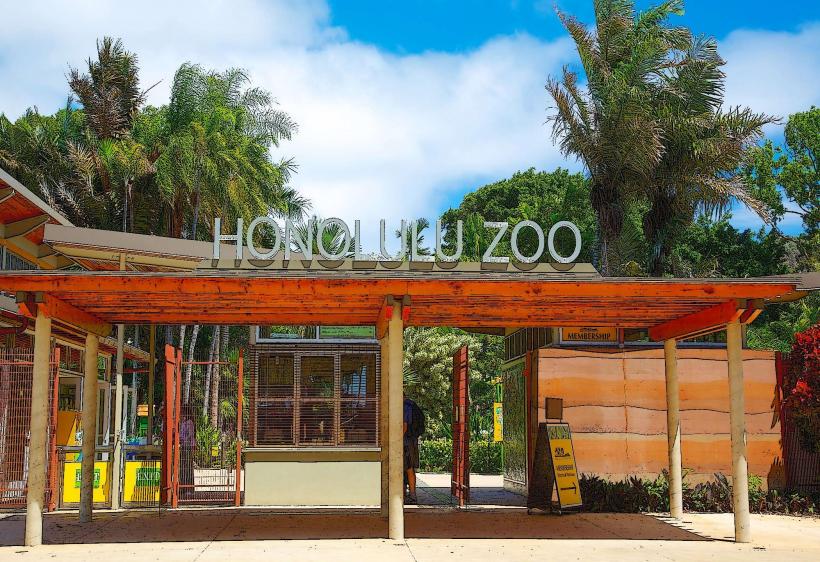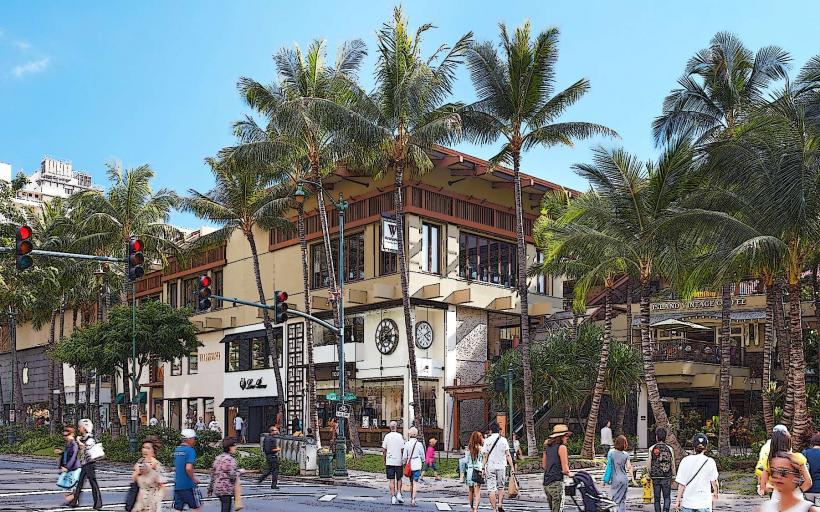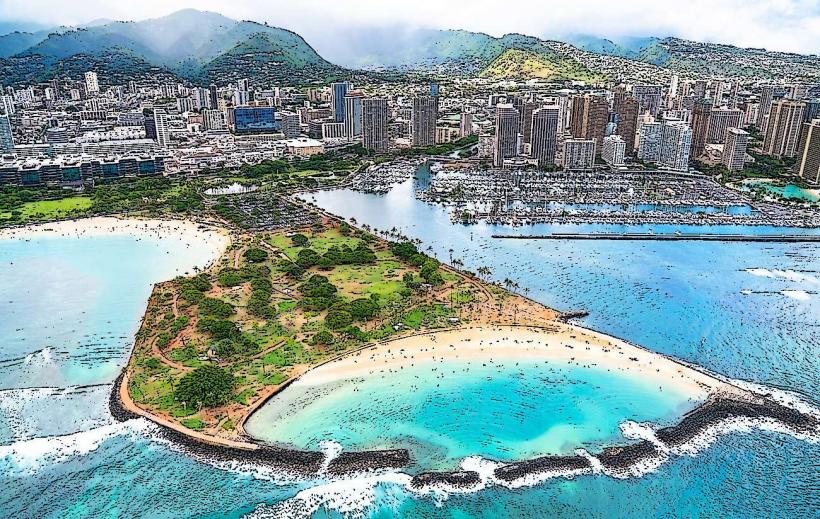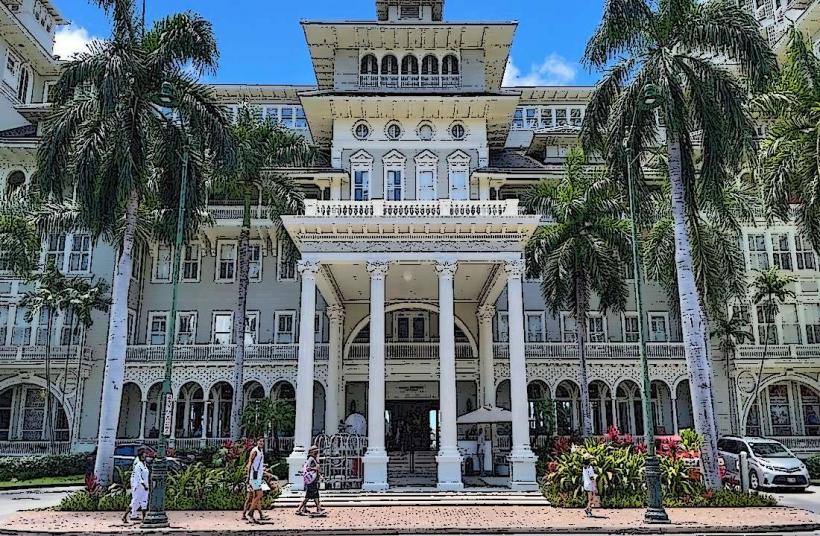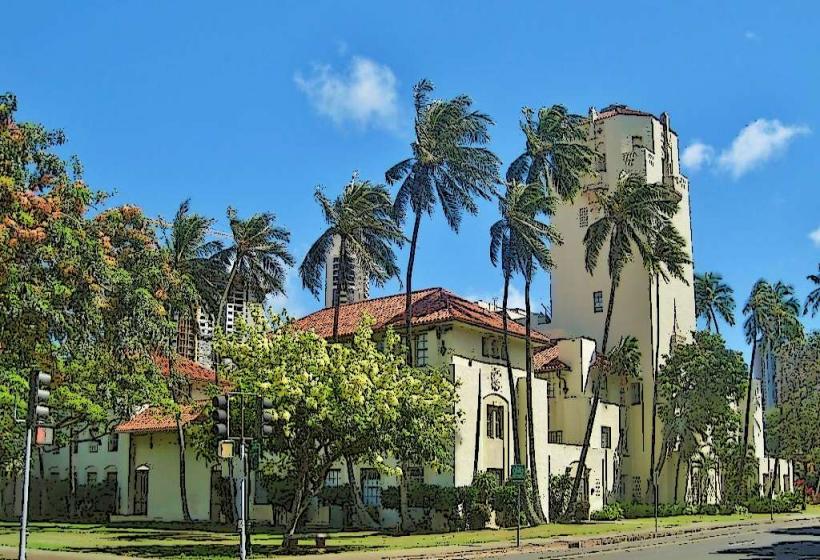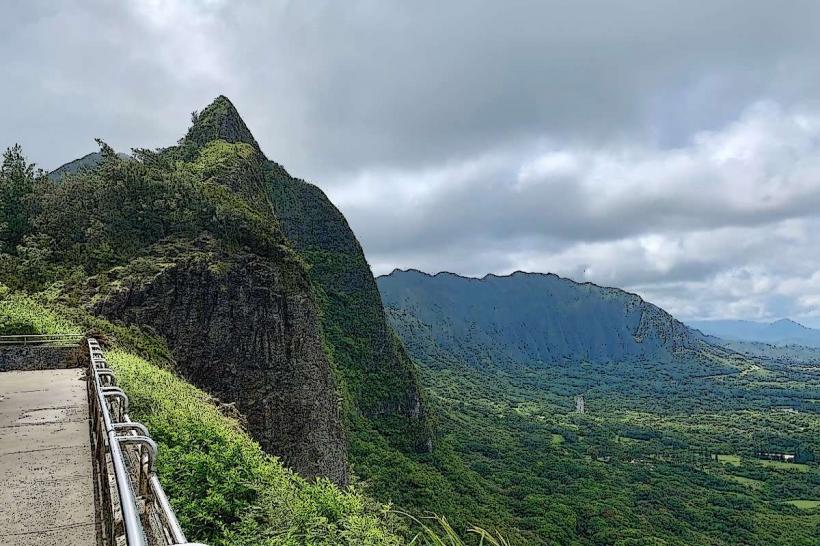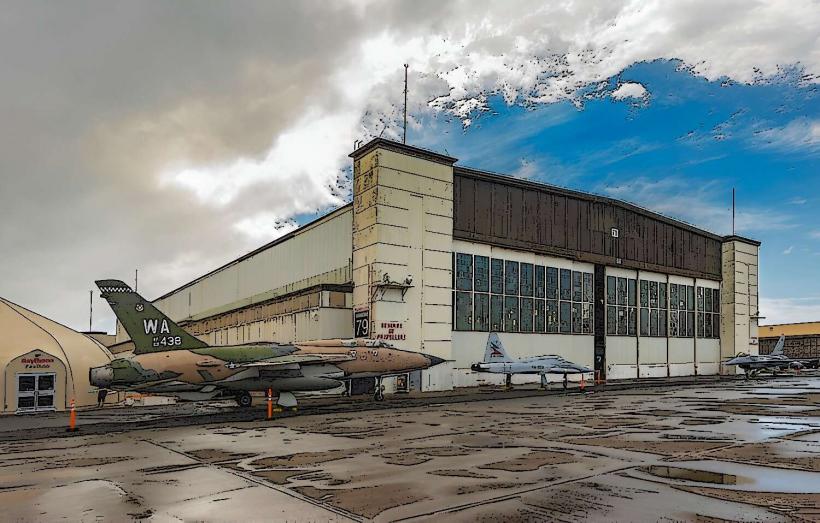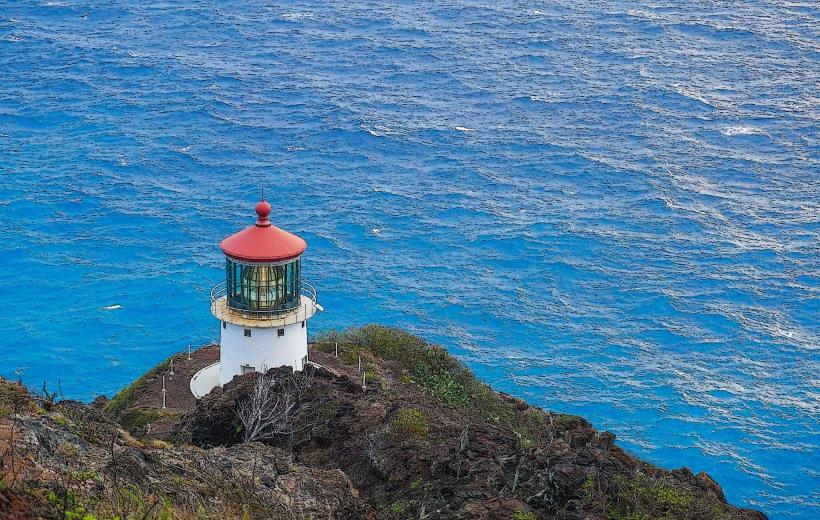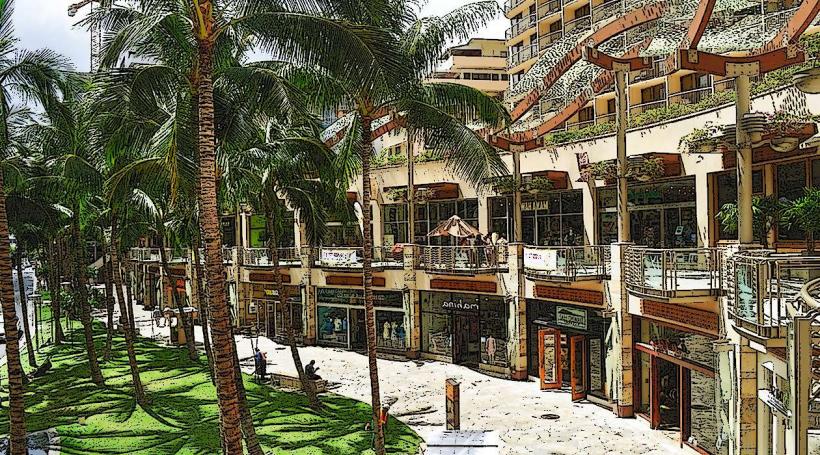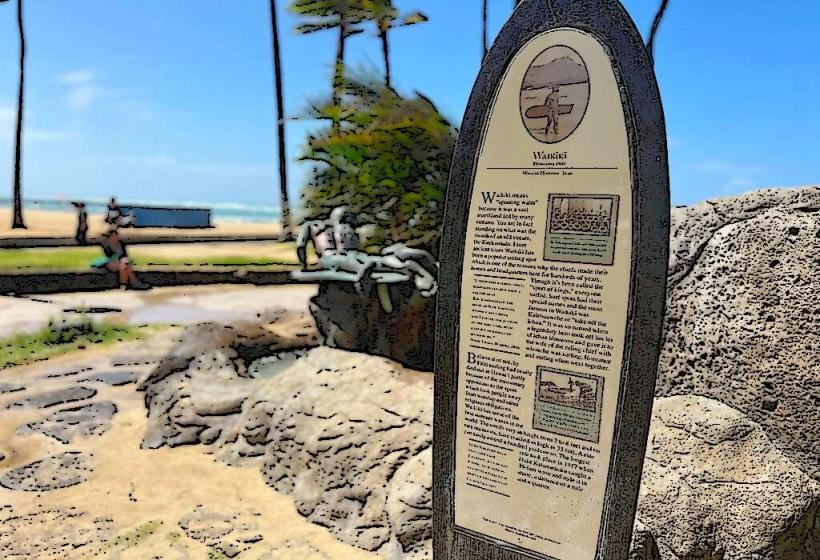Information
Landmark: Punchbowl Crater (National Memorial Cemetery of Pacific)City: Honolulu
Country: USA Hawaii
Continent: North America
Punchbowl Crater, officially known as the National Memorial Cemetery of the Pacific, is one of the most solemn and significant sites in Hawaii. Nestled in an extinct volcanic crater in Honolulu, it serves as a tribute to the men and women who served in the United States Armed Forces, particularly those who sacrificed their lives in the Pacific theater during World War II and subsequent conflicts.
History of Punchbowl Crater
- Formation: Punchbowl Crater, or Puowaina, is an extinct volcanic tuff cone formed approximately 75,000 to 100,000 years ago. In Hawaiian, "Puowaina" means "Hill of Sacrifice," reflecting its historical significance in ancient Hawaiian culture as a site for ceremonies and burials.
- Military Use: During the 19th and early 20th centuries, the crater was used for various purposes, including a rifle range.
- Establishment as a Cemetery:
- Following World War II, the U.S. government sought a location for a national cemetery in the Pacific.
- The Punchbowl site was selected, and the cemetery was formally dedicated on September 2, 1949.
Features of the National Memorial Cemetery of the Pacific
1. Resting Place for Heroes
- The cemetery is the final resting place for over 53,000 military personnel, including:
- Soldiers, sailors, and airmen from World War II, the Korean War, and the Vietnam War.
- Pearl Harbor attack victims and other military actions in the Pacific.
- Many graves belong to unidentified service members, marked by headstones inscribed with "Known Only to God."
2. The Memorial and Courts of the Missing
- Memorial: At the heart of the cemetery stands a majestic memorial honoring the sacrifices of U.S. military personnel.
- Courts of the Missing:
- A series of marble tablets engraved with the names of over 28,000 missing service members from World War II, the Korean War, and the Vietnam War.
- Includes stirring tributes and inscriptions.
3. Stunning Views
- From the memorial and crater rim, visitors can enjoy sweeping views of:
- Downtown Honolulu.
- Diamond Head.
- Waikiki and the surrounding coastline.
4. Artwork and Symbolism
- The memorial features mosaics and maps depicting significant battles and military campaigns in the Pacific theater.
- A towering statue of Lady Columbia, often interpreted as an allegory of mourning and peace, is prominently displayed.
Visiting the Cemetery
Hours and Access
- Open daily from 8:00 AM to 6:00 PM, except on Christmas Day and New Year’s Day.
- No entrance fee, and parking is available on-site.
Etiquette
- This is a place of reflection and respect:
- Speak softly and behave reverently.
- Avoid walking on the grass near headstones unless necessary.
Historical and Cultural Significance
- Presidential Visits:
- The cemetery has been visited by many U.S. presidents, foreign dignitaries, and military leaders.
- Memorial Day Events:
- Annual ceremonies, including the decoration of graves with Hawaiian lei and U.S. flags, honor the fallen.
- Connection to Hawaii:
- Punchbowl Crater's unique location ties the military history of the U.S. to the natural and cultural heritage of Hawaii.
Nearby Attractions
- Honolulu Museum of Art: A short drive from the cemetery, showcasing art from Hawaii and around the world.
- Iolani Palace: Learn about Hawaii’s royal history in this nearby landmark.
- Pearl Harbor National Memorial: Complement your visit to the cemetery by exploring the USS Arizona Memorial and other historical sites.
Why Visit Punchbowl Crater?
Visiting Punchbowl Crater is a moving experience, combining natural beauty, profound history, and a deep sense of gratitude for those who served. Whether you're paying respects, learning about history, or simply seeking a tranquil place to reflect, this site embodies the spirit of sacrifice and peace, making it one of the most meaningful destinations in Hawaii.

